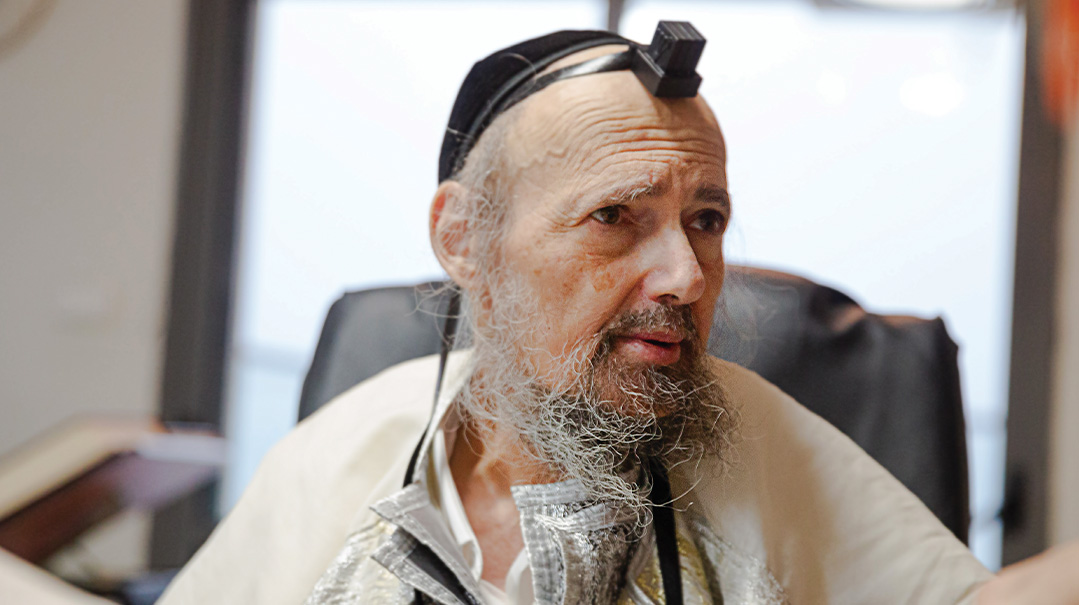Guardian of the City
| April 11, 2022Rav Dov Kook resides in Teveria but occupies a world of mystery

Photos: Elchanan Kotler
It’s early afternoon, and the little shul in Teveria is largely empty.
The Minchah people will be coming later, and the Shacharis crowd left hours ago — except for one lone figure, still standing in the same place, on the eastern wall, amid stacks of seforim and siddurim. Here, there’s a fire burning and it’s hard to tear one’s gaze away.
He stands strapped in the tefillin that stay on all day, wearing a white Bukharian-style kippah and a golden caftan. Under it are at least a dozen (some say 50) pairs of tzitzis embroidered with gold and silver threads, which makes it hard to discern just how bony and emaciated his holy body really is.
He has been standing here for hours, in deep concentration, since the haneitz minyan for Shacharis. Suddenly, he bows down on his knees as his tall body literally folds in half. It’s hard to tell if he’s standing or sitting in the air. Now he rises and bends again, his eyes closed tight.
The wrinkled hand moves to support the broad forehead, the protruding veins of which are said to form the letter Shin. It’s a motion that might indicate an oncoming headache — yet after a few moments of mental exertion, the hand suddenly moves aside, as it finds a paper and pen and begins furiously writing down chiddushei Torah that have been revealed in the middle of davening.
Then the storm continues, with bowing and prostrations.
The scene calls to mind Chazal’s description of the tefillah of Rabi Akiva, who is buried just a few hundred yards from this spot: “When he prayed alone, a person put him in one corner and found him in another corner, because of the many bows and prostrations.”
It’s 1,900 years later, and Rav Dov Isser Hakohein Kook is following the same pattern. He prays and bows, rises and again bows. He has been doing this for decades, day and night, and no one knows his secrets.
Oops! We could not locate your form.







